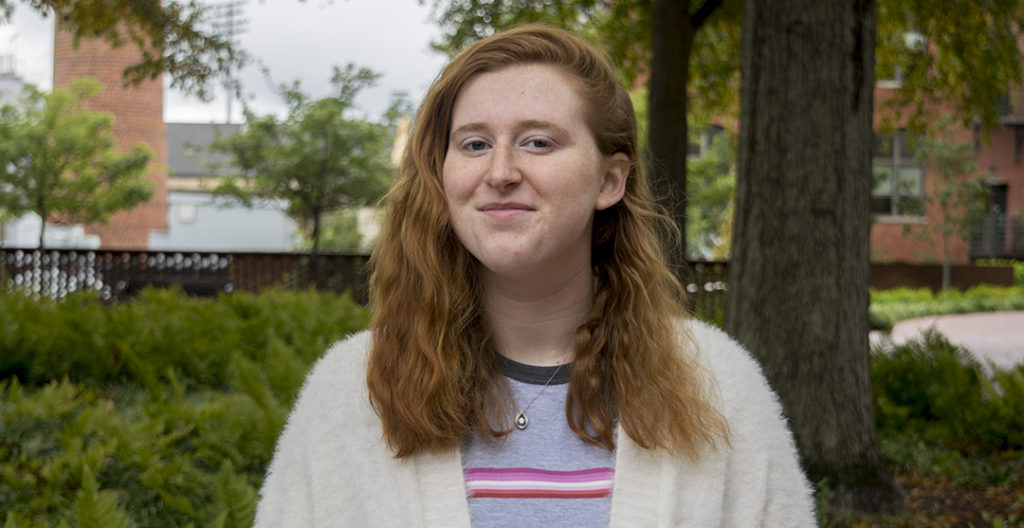
In an increasingly globalized world, diversity and inclusion have continued to shake up the workforce. On Feb. 19, a panel of animators from the International Animated Film Association gathered at the Robert C. Williams Museum of Papermaking to discuss representation within the animation industry.
The panelists explained how representation within animation as an industry and an art form involves both on and off-screen actors. “There aren’t a lot of people that look like me who are doing this, but I never thought I was trying to represent the African American community or women,” said Davonne Dupart, a freelance animator and adjunct professor at SCAD.
“I like doing this, and I want to do it,” Dupart continued. “I never thought of myself as a black woman doing this. It was just I’m an artist — I’m an animator. I love doing this. But then when other people would hear, it would be ‘Oh, you’re an animator? But you’re black?’”
Jules Premus, a character designer for Floyd County, further discussed disconnects in the animation industry in terms of those creating characters and the characters they are representing on screen.
“It’s the irony, a lot of times, that marginalized people have to work on things that include them but don’t represent them accurately,” said Premus.
For these two animators, representation behind the screen as well as on the screen is equally important.
“Most studios are predominantly white male,” said Dupart. “Overall, I’ve been the only woman there, and maybe there’s one other black man there … You definitely feel like a minority.”
Dupart elaborated on the challenges of being a minority within the industry. “I’m hyper-aware of how I’m being perceived,” she explained. “I’m always aware of how I can be perceived.”
Dupart explained the significance of perceptions within animation, an industry built upon networking and connections.
“It’s all about who you know,” she said. “If they don’t know you, they’re not really going to listen … It almost feels like ‘Man, I’m not a part of that club, how am I going to get there?’”
Panelist Jules Premus further discussed inclusion, diving into the relationship between creating animation and owning animation.
“We don’t just want jobs in the industry. We want ownership of our work and direction of our work,” said Premus. “It’s hard to stay motivated when you feel like you’re the only one.”
In order to create motivation within the industry, Premus outlined steps towards creating a more inclusive workplace for employees.
“Really working towards a place where we’re not just working to tell stories of people more privileged than us, but working to a place to where we can actually own the work and the stories that we tell.”
Dupart defined inclusivity in a similar manner, stressing the importance of diversity both on screen as well as behind the screen.
“Diversity is really having a multitude of people at the decision-making table … It comes to who’s not just on the screen but who’s at the decision-making table.”
Creatively, inclusion can be a difficult topic to navigate, especially when attempting to represent characters without reinforcing stereotypes.
“For me the biggest thing has been referencing real people and referencing from life and real stories, and not trying to guess at what someone’s experience is going to be or to make assumptions on what is typical or atypical,” said Premus.
Dupart shed some light on the character creation process behind the Oscar-winning Hair Love. The short features an African American family and follows a father attempting to do his daughter’s hair.
“What kind of restrictions were they going to put on how these characters needed to look, how would they feel about having a black man with dreads? Not only dreads, but with tattoos, also. He’s not this button-up what you would think of as a safe or approachable type of person,” she explained, illustrating the difficult questions that go into character portrayal.
Premus further discussed the difficulties of character portrayal in terms of disabilities, an often overlooked element of inclusion.
“There’s such a broad range that the term ‘hidden disability’ can include, from being on the spectrum to having a hearing impairment, things you don’t necessarily want to be outed to having, but you want the assumption that the community is going to accept you,” explained Premus.
“As my back became worse and worse, I sort of saw into this world of hidden disabilities and how few people actually take them seriously,” said Premus, referring to his struggle with severe scoliosis.
Premus explained the importance of representation as a fundamental part of identity exploration.
“People are just now learning that we love to see ourselves,” said Premus. “We need to see ourselves as a human element.”









